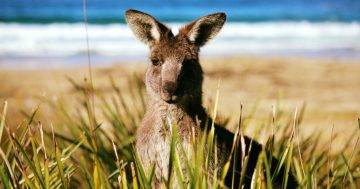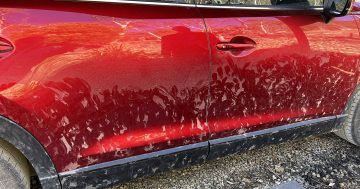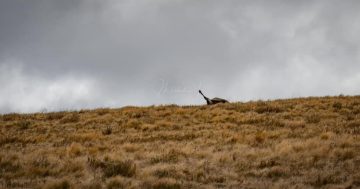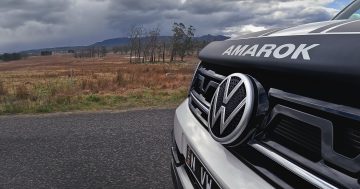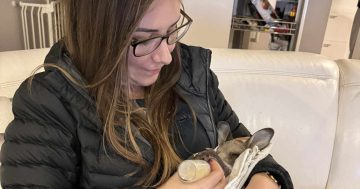
Too close to home. Kangaroos hopping about city streets are now as common as they are in the bush. Photo: Supplied.
It’s that quintessentially Aussie story that never goes away. Like how do mice get through non-existent holes in your bedroom wall, why half of most country pubs have Chinese restaurants occupying their other half, and why, even if you live less than an hour from Canberra, you have to stand in the back paddock, on your toes, waving your hand about, to get mobile reception.
Kangaroos. Used to be that if you drove slower than normal around the known danger times, dawn and dusk, you’d be OK. Or if you spent a lot of money on one of those things you stick to the front of your car that emits a sound only those animals hear which is supposed to scare them off the road.
Now they’re everywhere. Again, no reason for it when you consider all the green pick in the bush following the rain – except the standard one, that our lives, homes, parks and selves, have taken over their world.
When you live out of town, it was once clear which bits of road they were more likely to jump out at you, where you should slow down, and where you were reasonably safe to speed up again.
Has anyone else noticed how so many more of them are around now? As people start talking culls again, or a car manufacturer boasts about some whizz-bang warning mechanism they’ll be testing in the city soon, surely they’re missing the point.
We are where they used to be. Free as, well, really big birds.
So the debate fires up again with that word that divides us. Cull.
Shooting any animal, unless it is in immeasurable pain, is abhorrent – but so is hitting them full on and seeing the look on their face as they bounce off your car.
One memory that will never leave was when I was driving to work early one morning and, coming round the corner, I saw a bloke standing in the middle of the road. He was next to a young roo that had its head up but every other part of it was collapsed in a heap.
The look on the bloke’s face said it all. He was waiting for me to pass so he could put the animal out of its misery. I heard the shot as I rounded the next corner.
One year I hit two roos in almost as many months. Both times I was on a road I knew so well I could have built it. Both times I had one of those noise emitter thingies perched on the front of the car, both times I even remembered not to swerve or brake, like they tell you, but both times I hit the animal. The first time I killed it. The second time I hit it and it lamely hopped off into the bush. We spent about an hour looking for it but couldn’t find it. Neither could the wildlife rescue folk who came out later.
Good citizens, be they farmers, teachers (or both), respect animals and want only the best for them. If they are starving and coming closer to human populated areas, we all suffer.
Shooting them? Making them infertile? Moving them on? Who knows?
The only thing clear in this mind is the look on the animal’s face and the feeling in the human’s heart, when it all gets too close to home.
Original Article published by Sally Hopman on Riotact.







